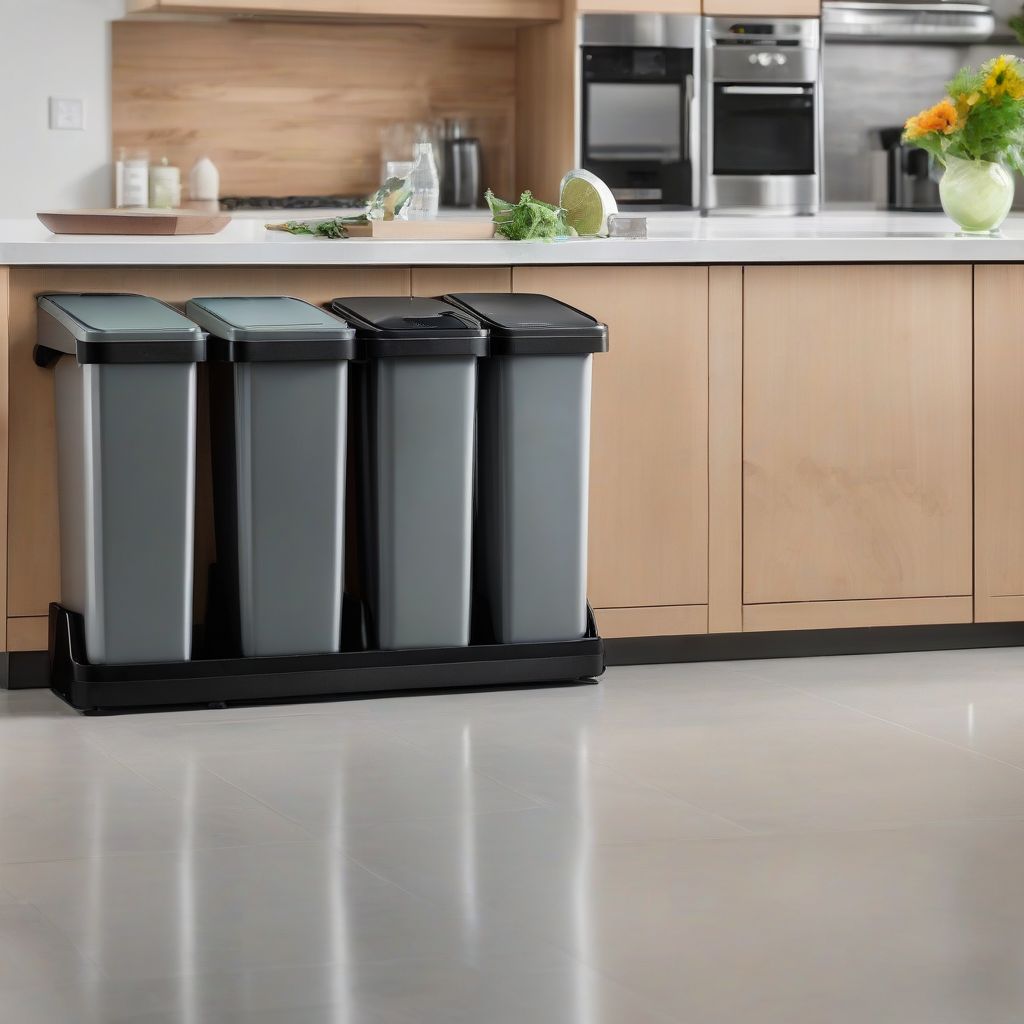Imagine a world where lush green forests stretch as far as the eye can see, where crystal-clear rivers meander through vibrant meadows, and the air is refreshingly crisp and clean. It’s a world we all yearn for, a world that’s under threat from the ever-growing issue of climate change.
As a nutritionist, I often talk about the impact our food choices have on our health. But did you know that our homes play a significant role in our environmental footprint too? It’s true! From the energy we use to the waste we generate, our everyday habits can either contribute to the problem or be a part of the solution.
The good news is, making your home more eco-friendly doesn’t require drastic overhauls. It’s all about taking small, manageable steps that, when combined, can make a real difference. Ready to embrace a greener lifestyle? Let’s dive into some practical tips for reducing your home’s carbon footprint and creating a healthier planet for generations to come.
Energy Efficiency: Powering Your Home with Sustainability
Our homes are energy-hungry beasts, consuming electricity for lighting, appliances, and temperature control. By making conscious choices to reduce energy consumption, we can significantly shrink our carbon footprints.
Embrace the Power of the Sun: Solar Energy Solutions
One of the most impactful ways to reduce your reliance on fossil fuels is by harnessing the power of the sun. Solar panels convert sunlight into electricity, providing clean energy for your home.
- Consider solar panel installation: While an initial investment, solar panels offer long-term cost savings and significantly reduce your carbon footprint.
- Explore solar water heating: Solar water heaters use the sun’s energy to heat your water, reducing your reliance on traditional water heaters.
Embrace Energy-Efficient Appliances
When it’s time to replace old appliances, opt for energy-efficient models. Look for appliances with the Energy Star label, which signifies that they meet strict energy-efficiency guidelines.
- Upgrade to energy-saving refrigerators: Refrigerators are among the biggest energy consumers in our homes. Newer models are designed to be more energy-efficient, saving you money on your electricity bill and reducing your carbon footprint.
- Choose efficient washing machines and dryers: Front-loading washing machines and energy-efficient dryers use less water and energy, making them eco-friendly choices.
Lighting the Way to Sustainability
Switching to energy-efficient lighting is one of the easiest and most cost-effective ways to reduce your energy consumption.
- Make the Switch to LED Lights: LED lights are significantly more energy-efficient than traditional incandescent bulbs and last much longer, saving you money in the long run.
- Maximize Natural Light: Open your curtains and blinds during the day to let natural light flood your home, reducing your reliance on artificial lighting.
Water Conservation: Protecting Our Most Precious Resource
Water is a precious resource, and conserving it is crucial for a sustainable future. Simple changes in our daily habits can have a big impact on our water footprint.
Fix Leaks and Drips: Small Leaks, Big Impact
A dripping faucet or leaky toilet may seem like minor issues, but they can waste thousands of gallons of water each year.
- Be proactive: Regularly check for leaks in your faucets, toilets, and showerheads.
- Simple fixes: Often, fixing a leak simply requires replacing a worn-out washer or tightening a connection.
Mindful Water Usage in the Bathroom
The bathroom is another area where we can make significant water savings with a few simple changes.
- Shorter Showers: Challenge yourself to take shorter showers to conserve water.
- Water-Saving Showerheads: Install low-flow showerheads to reduce water consumption without sacrificing water pressure.
Water-Wise Gardening Practices
Maintaining a lush lawn can be a major water drain. Consider these water-wise gardening practices:
- Choose Drought-Tolerant Plants: Opt for native plants and drought-tolerant varieties that thrive in your local climate with minimal watering.
- Water Deeply and Less Often: When you do water your lawn or garden, water deeply and less often to encourage strong root growth and reduce evaporation.
Waste Reduction: Embracing the Three R’s
Our throwaway culture has resulted in overflowing landfills and environmental pollution. By embracing the three R’s—reduce, reuse, and recycle—we can minimize our waste and conserve resources.
Reduce: Less is More
The most effective way to reduce waste is to consume less in the first place.
- Be a Conscious Consumer: Before making a purchase, consider whether you truly need the item.
- Buy in Bulk: Purchasing items like food and household products in bulk reduces packaging waste.
- Say No to Single-Use Plastics: Ditch single-use plastic water bottles, bags, and food containers in favor of reusable alternatives.
Reuse: Give Items a Second Life
Before tossing something in the trash, think about ways you can reuse or repurpose it.
- Get Creative: Turn old jars into storage containers, use worn-out clothing as cleaning rags, and find creative ways to give discarded items a new lease on life.
- Donate or Sell: Donate unwanted clothing, furniture, and household goods to charities or sell them online or at consignment shops.
Recycle Right: Closing the Loop
Recycling is essential for conserving resources and reducing the amount of waste that ends up in landfills.
- Know Your Local Recycling Guidelines: Familiarize yourself with your local recycling rules to ensure you’re recycling correctly.
- Rinse and Sort: Rinse food containers and sort your recyclables according to your local guidelines.
 Recycling Bins in a Kitchen
Recycling Bins in a Kitchen
Sustainable Choices: Making Eco-Friendly Decisions for Your Home
Beyond energy, water, and waste reduction, there are numerous ways to make your home more sustainable through eco-friendly product choices and conscious consumerism.
Choose Sustainable Materials
When renovating or making home improvements, opt for sustainable and eco-friendly materials whenever possible.
- Bamboo and Cork: These fast-growing, renewable resources make excellent flooring, furniture, and building materials.
- Reclaimed Wood: Using reclaimed wood from old barns, factories, or other structures reduces the demand for newly harvested timber.
Support Eco-Friendly Brands
Vote with your wallet by supporting companies that prioritize sustainability and ethical practices.
- Look for Certifications: Look for certifications like Fair Trade, Rainforest Alliance, and B Corporation, which indicate a commitment to social and environmental responsibility.
- Research Brands: Take the time to research the companies you’re buying from and their environmental and ethical track records.
Green Your Cleaning Routine
Conventional cleaning products often contain harsh chemicals that can be harmful to both our health and the environment.
- DIY Cleaning Solutions: Make your own cleaning solutions using simple ingredients like vinegar, baking soda, and essential oils.
- Choose Eco-Friendly Products: Opt for cleaning products that are biodegradable, non-toxic, and packaged in eco-friendly packaging.
Conclusion: Building a Greener Future, One Step at a Time
Reducing our environmental impact is not about achieving perfection but rather about making conscious choices in our everyday lives. By implementing these tips for reducing your home’s carbon footprint, you’re not only creating a healthier living space for yourself and your family but also contributing to a more sustainable future for all.
Remember, every small step counts. Whether it’s switching to energy-efficient appliances, conserving water, reducing waste, or making eco-friendly purchases, your actions have the power to make a difference. Let’s embrace a greener lifestyle and work together to create a world where both people and the planet can thrive.
What steps are you taking to make your home more eco-friendly? Share your thoughts and ideas in the comments below!
[amazon bestseller=”sustainable living”]
